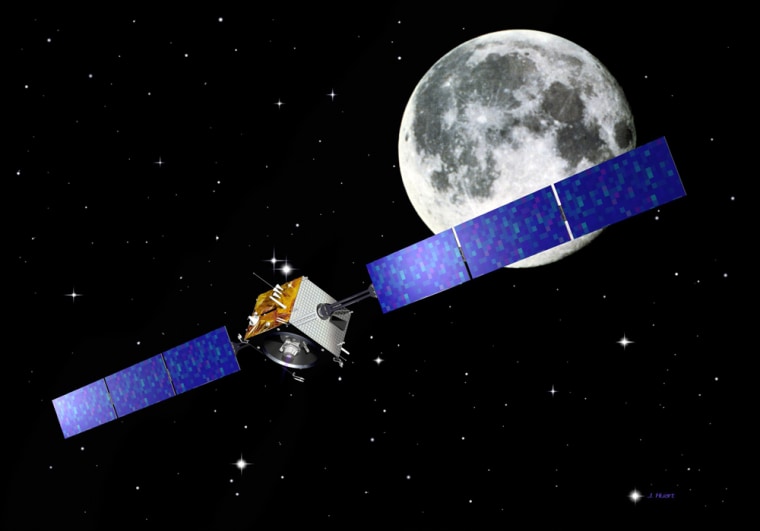Europe's first mission to the moon got a scare, but ground controllers made a last-minute course correction early Saturday that kept the craft from hitting the surface earlier than planned.
Mission officials said they raised the low point of the SMART-1 spacecraft about 2,000 feet (600 meters) by using its positioning thrusters to avoid the almost mile-high (1.5-kilometer-high) rim of a moon crater.
The maneuver began late Friday night from the European Space Agency's mission control in Darmstadt and was completed about three hours later, said Octavio Camino, spacecraft operations chief for the mission.
"We have got confirmation that the maneuver was successful," Camino said.
SMART-1 has been orbiting lower and lower ahead of its scheduled impact early Sunday, which experts hope to study for clues to the composition of the surface in that area. Without the correction, it would have crashed one orbit too soon, making the impact difficult or impossible to observe.
Slideshow 12 photos
Month in Space: January 2014
The craft is to end its three-year voyage at 1:41 a.m. ET Sunday by crashing into a volcanic plain called the Lake of Excellence at 4,475 mph (7,200 kilometers per hour). The impact could increase understanding of how the lunar surface evolved and help test a theory that the moon originated when another astronomical body slammed into Earth.
Even before the $140 million mission ended, ESA was celebrating the main goal — a successful test of the ion engine that it hopes to use for future interplanetary flights, such as the BepiColombo joint mission to Mercury with Japan's space agency slated for launch in 2013.
NASA's Deep Space 1, launched in 1998, also used an ion engine.
SMART-1 was launched on an Ariane 5 rocket from the European spaceport in Kourou, French Guinea, on Sept. 27, 2003.
A cube measuring roughly 3 feet (1 meter) on each side, the probe took the long way — over 62 million miles (100 million kilometers) instead of the direct route of 217,000 to 250,000 miles (347,000 to 400,000 kilometers) flown by American astronauts in Apollo spacecraft that reached the moon in just a few days.
The spacecraft has also been taking high-resolution pictures of the surface with a miniaturized camera.

